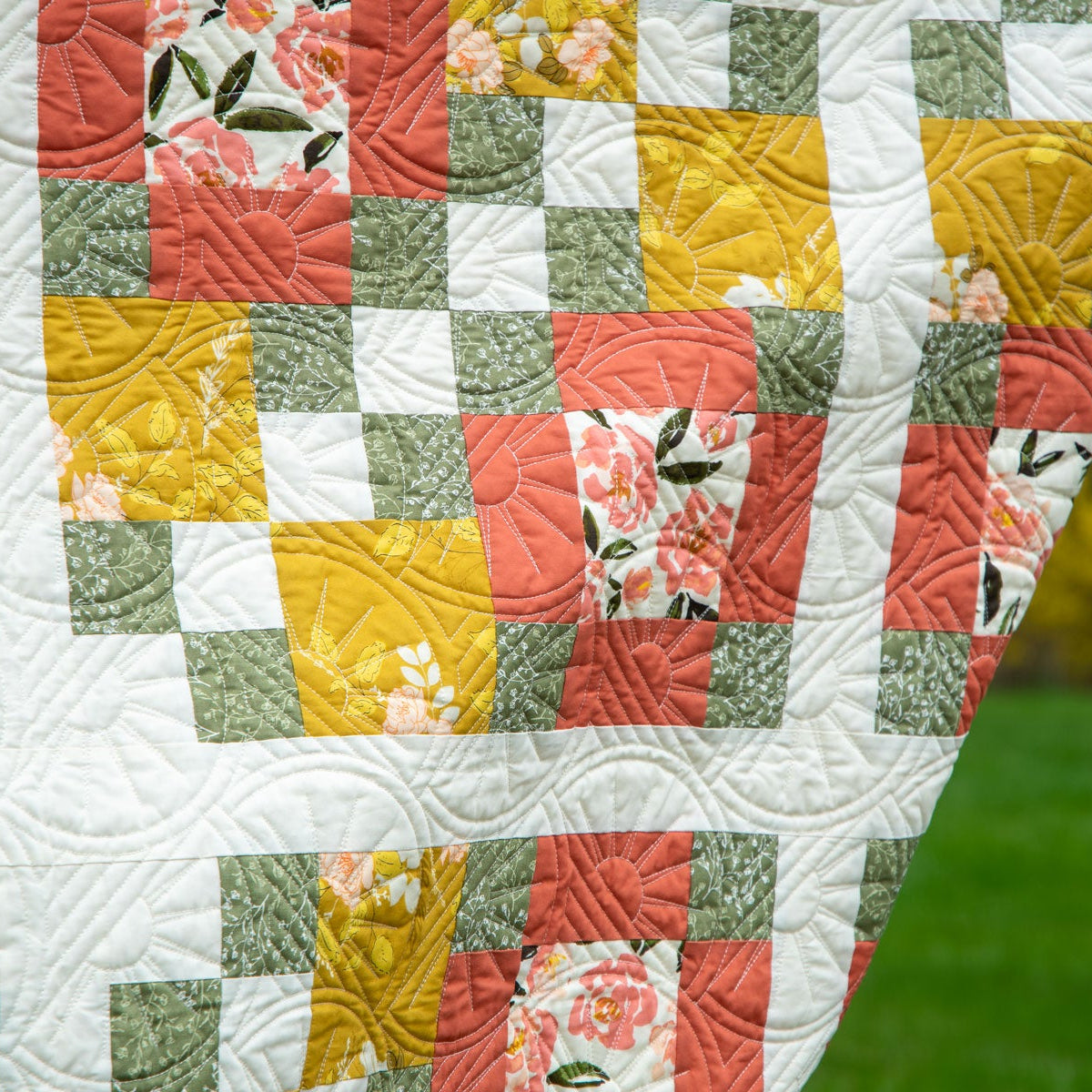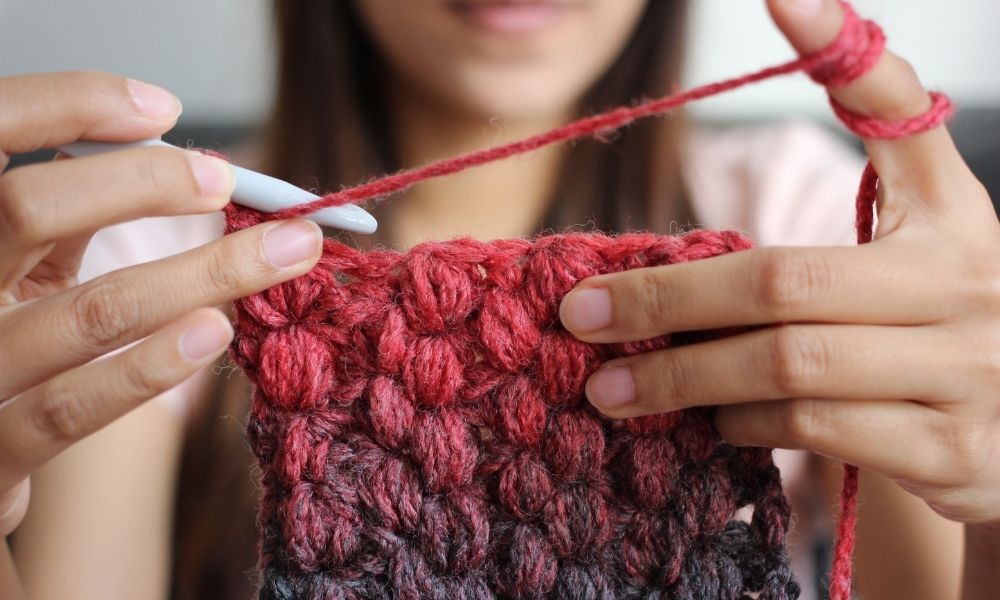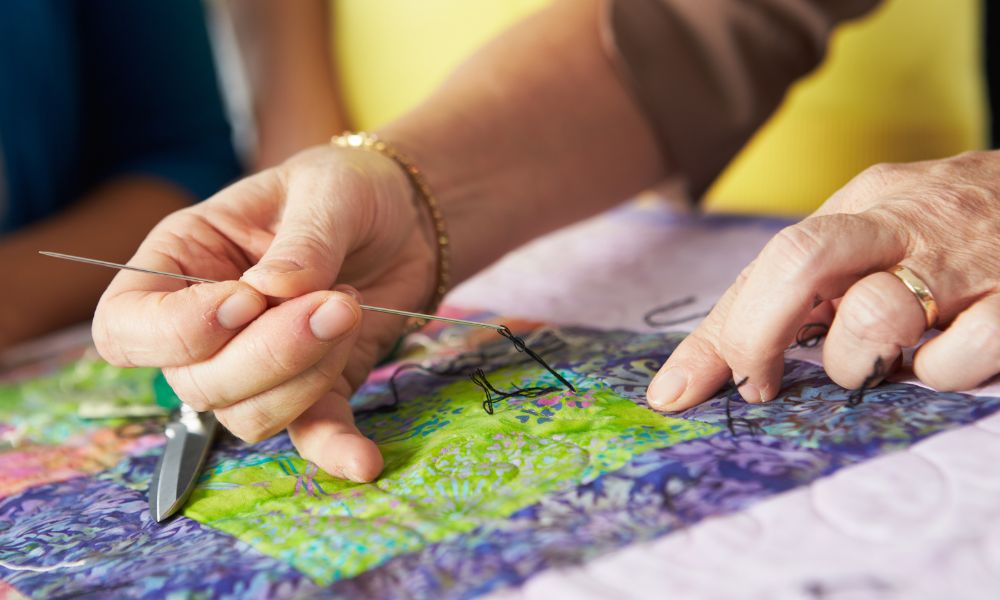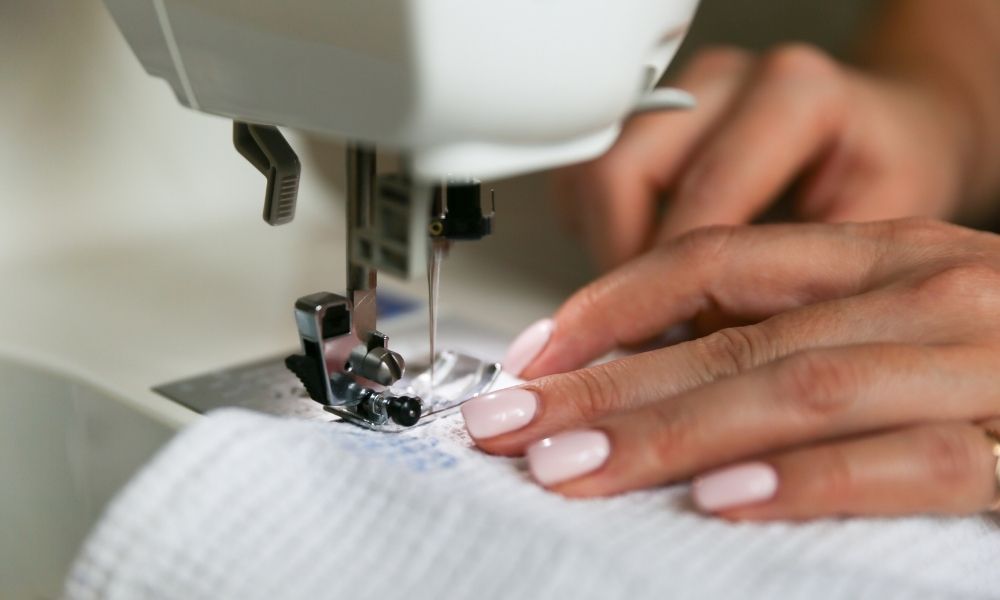How To Set Up Your Own Quilting Workshop

When you’re first getting familiar with quilting, you’re probably thinking that setting up a crafting area could jinx your passion. You’re introducing yourself to a new hobby, learning unfamiliar stitching terms, and practicing techniques; you’re making sure that this is a genuine interest and that you enjoy it!
While you’re having fun pacing yourself in learning, there will come a time where a designated work area will be necessary for your quilting tools to call home. Pull out the pen and paper because we’re teaching you how to set up your own quilting workshop so you can keep all your materials together and work freely.
Map Out and Prepare Your Space
First things first—it’s time to brainstorm an area where you can envision yourself honing your craft. It could be a spare room in your home that could use a purpose or even your garage! Wherever you choose to perch, you’ll need a game plan in setting up the space to become a proper quilting and stitching cave that you can come to and work in without interruption.
After choosing an ideal spot, map out the place to know where stations and materials will be—this will get you one step closer to your craft zone. You don’t have to put your all into creating a sketch; however, jotting down a list or drawing a rough sketch of areas within the workshop can help bring your placement ideas to life.
Assembling Your Crafting Bench
Arts and crafts need ample space to thrive, and that’s where a workbench comes in handy! Your crafting table will provide a hard surface that can facilitate measuring, markings, and fabric cutting. Of course, you’ll need a sturdy place to keep your sewing machine!
For some quilters, setting up a workbench before other steps can help set the tone of your workshop. You can introduce and organize other stations around your craft bench to maximize flow and efficiency while in the zone.
Purchase Your Tools
After brainstorming your new quilting space and assembling your workbench, it’s time for the fun part! If dabbling in the quilting hobby meant hand-stitching pieces together, it’s safe to say that it’s time for a much-needed upgrade.
A sewing machine is the most vital tool to creating elaborate quilting pieces, but there are other tools and accessories that you might want to consider if you haven’t purchased them already.
- Fabric and Batting: Perhaps some of the more apparent essentials, these materials build your quilts, so having an ample supply of both is the right move. Plus, more material to work on means more inspiration.
- Rotary Cutter and the Right Cutting Mat: A cutting tool and a cutting mat are like peanut butter and jelly; you’ll seldom see one without the other. A 45mm rotary cutter is perfect for general cutting, while a self-healing mat absorbs most markings while cutting fabric.
- Fabric Shears: A new pair of shears that gets the job done and glides through fabric like butter is something of dreams! Who wants to work with dull shears? No quilters do—that’s for sure!
- Rulers: Acrylic rulers are optimal choices for quilting, considering their transparent material and easy-to-read markings.
- Sewing Machine Needles and Thread: With your sewing machine, consider picking up additional needles, as you may find yourself changing needles with every new project. Of course, don’t forget the thread.
- Seam Ripper: We’re here to tell you that mistakes happen, and it’s all part of the process. As you might already know, a seam ripper is your best friend in times that projects start turning sour.
- Iron: Remember that a well-working iron is vital to pressing seams open, pressing quilt tops, and more.
- Pins and Pincushion: Pins are easy to come by yet even easier to lose track of during a quilting project. Having all your pins on a pincushion keeps them in one spot and prevents those unnecessary pokes that can ruin your day.
Organize Your Tools
Once you have all the tools needed to build the foundation of your new workshop, it’s time to organize your new purchases so you can maintain an orderly space. With your sewing machine already on your workbench, consider placing your rotary cutter and cutting mat on the table nearby to facilitate fabric work.
Accessories like needles, thread, and pins look best in smaller containers or even a craft box with multiple compartments. Proper storage can prevent losing these items, which means you’ll invest less money in replacements.
Store Your Fabric
Now when it comes to fabric, there are multiple ways you can go about storing your material. Sure, you can always fold your fabrics and place them in an area for future use. However, here are a few nifty ideas you can draw inspiration from that may keep your materials organized and easy to find when crafting gets messy.
- Skirt Hangers: Your material will remain crisp and out of the way with this storage trick!
- Old Bookshelves: After folding fabric to size, place them in an old bookcase for easy access.
- Fabric Boards: Folding material without a board can make it easier for the fabric to lose shape, especially when storing it in an upright position.
- Old File Cabinets: Old filing cabinets can find purpose with this hack. Fold the fabric and hang it over the dividers for quick browsing.
Keep in mind that as you incorporate more textiles into your collection, some materials might require separate storage. You should keep your fabrics in clean, cool, and dry areas that are free from temperature and humidity changes that could affect quality.
Create Good Lighting
As entertaining as quilting is, working on a project might require sitting at your workbench for long hours. If you’re working on a piece during the day and lose track of time, remember to have adequate illumination throughout your space to make stitching and cutting easier on the eyes.
Having at least two lighting sources with additional lighting on your craft bench is optimal, as each source will help in casting away shadows that can hide imperfections on a quilting piece.
Taking the next step in your crafting hobby is exciting and calls for a designated area to get serious about it. With simple instruction, you’ll learn how to set up your own quilting workshop and design a space that’s fully functional for your craft.
Consider Lindley General Store as a one-stop shop where you can buy quilting supplies online. We have an impressive catalog of quilting essentials that can fill starter kits and replenish stock for the more advanced. Feel free to check out our incredible selection for your next quilting project!








Comments